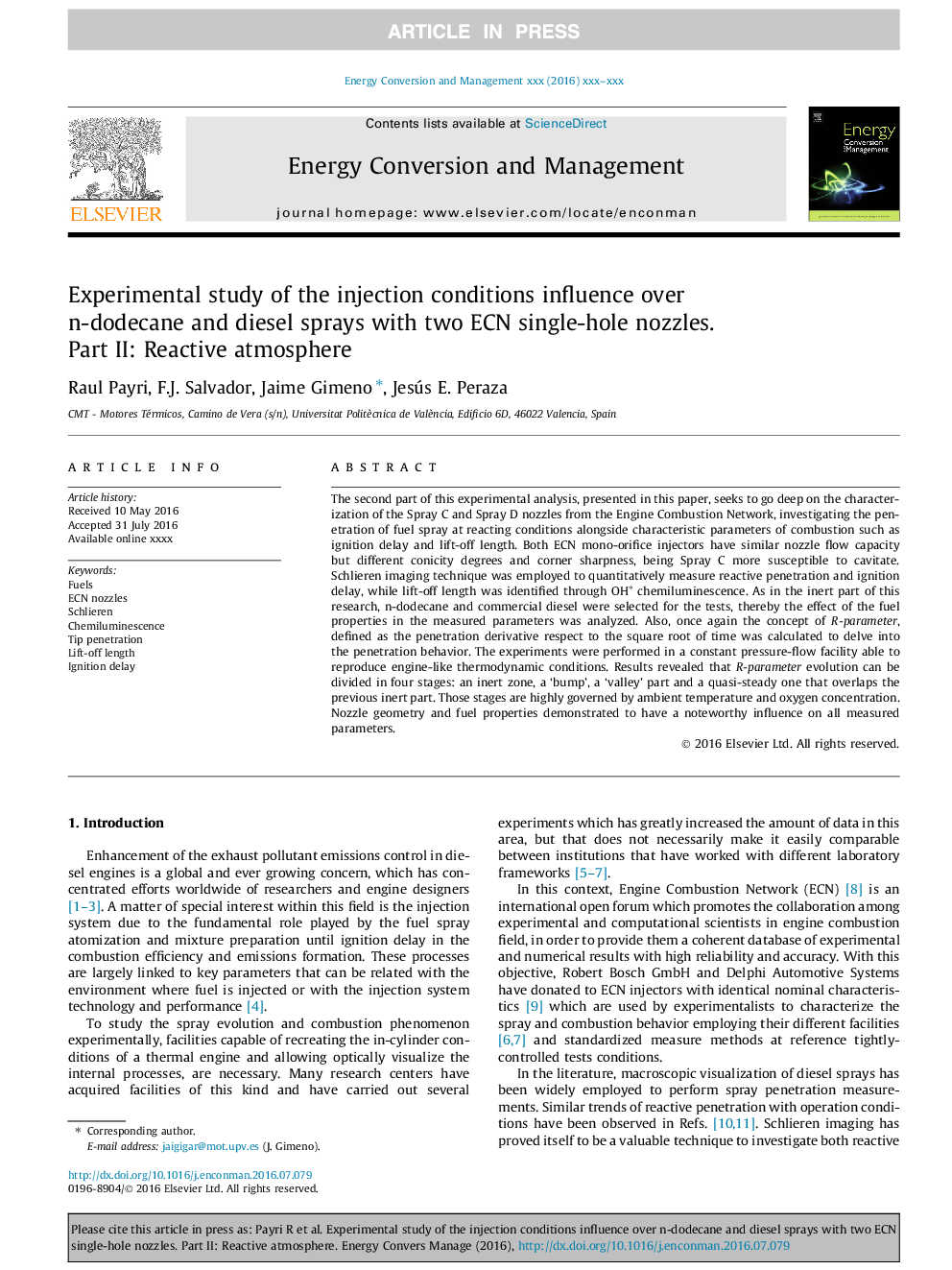| Article ID | Journal | Published Year | Pages | File Type |
|---|---|---|---|---|
| 7160097 | Energy Conversion and Management | 2016 | 11 Pages |
Abstract
The second part of this experimental analysis, presented in this paper, seeks to go deep on the characterization of the Spray C and Spray D nozzles from the Engine Combustion Network, investigating the penetration of fuel spray at reacting conditions alongside characteristic parameters of combustion such as ignition delay and lift-off length. Both ECN mono-orifice injectors have similar nozzle flow capacity but different conicity degrees and corner sharpness, being Spray C more susceptible to cavitate. Schlieren imaging technique was employed to quantitatively measure reactive penetration and ignition delay, while lift-off length was identified through OHâ chemiluminescence. As in the inert part of this research, n-dodecane and commercial diesel were selected for the tests, thereby the effect of the fuel properties in the measured parameters was analyzed. Also, once again the concept of R-parameter, defined as the penetration derivative respect to the square root of time was calculated to delve into the penetration behavior. The experiments were performed in a constant pressure-flow facility able to reproduce engine-like thermodynamic conditions. Results revealed that R-parameter evolution can be divided in four stages: an inert zone, a 'bump', a 'valley' part and a quasi-steady one that overlaps the previous inert part. Those stages are highly governed by ambient temperature and oxygen concentration. Nozzle geometry and fuel properties demonstrated to have a noteworthy influence on all measured parameters.
Related Topics
Physical Sciences and Engineering
Energy
Energy (General)
Authors
Raul Payri, F.J. Salvador, Jaime Gimeno, Jesús E. Peraza,
